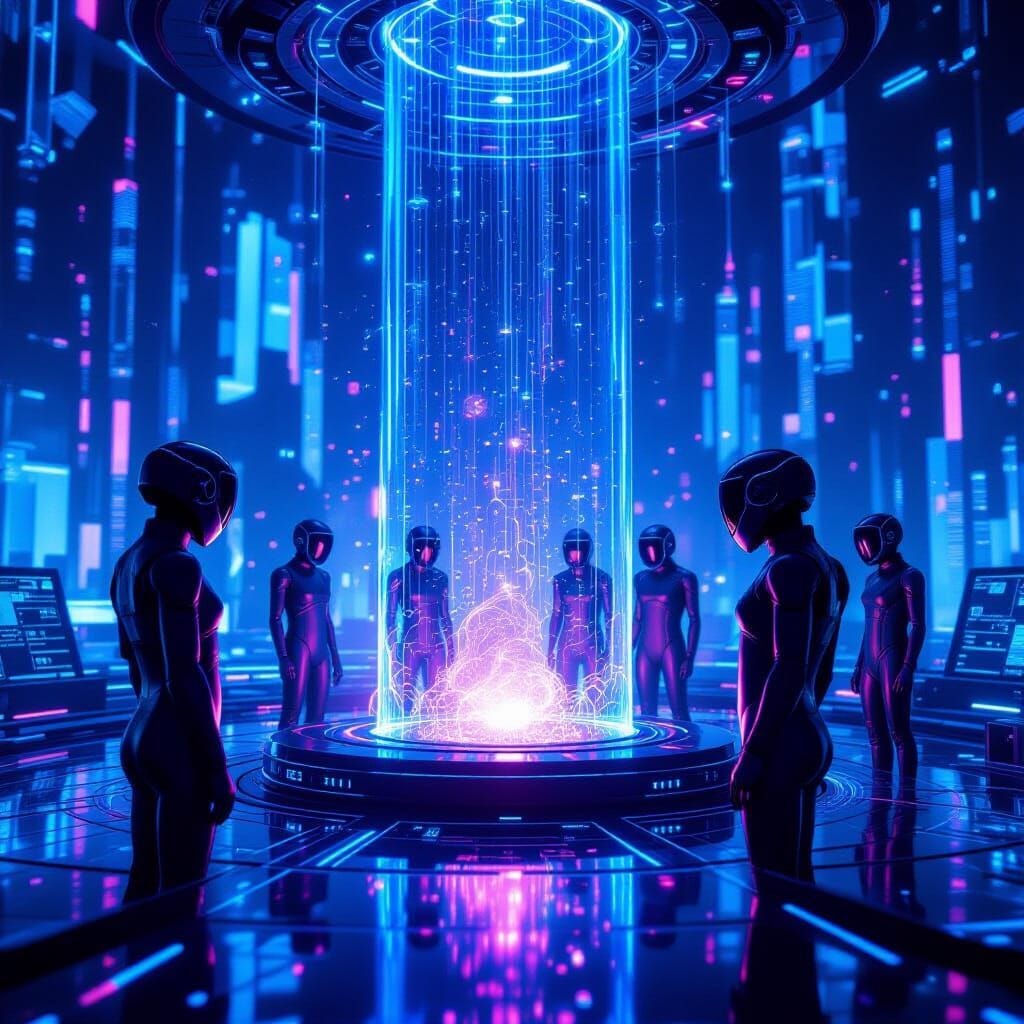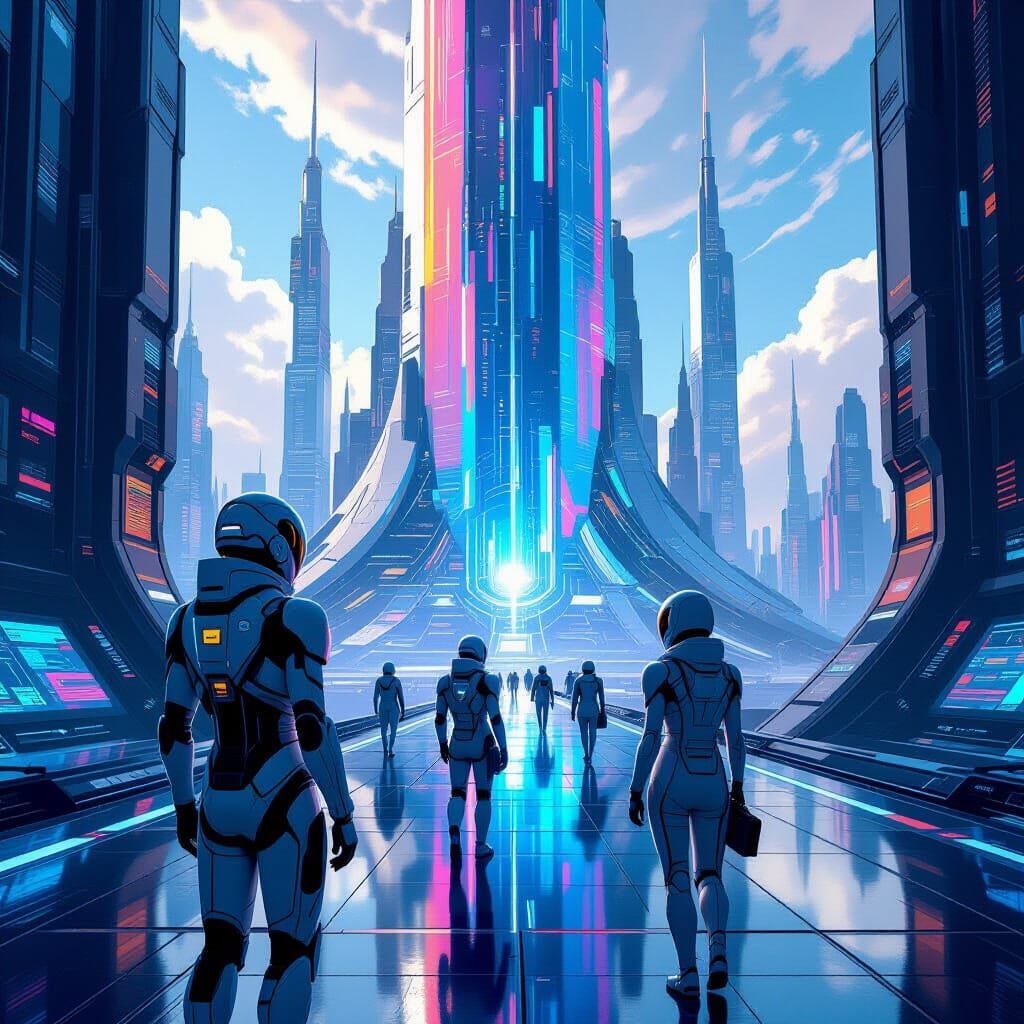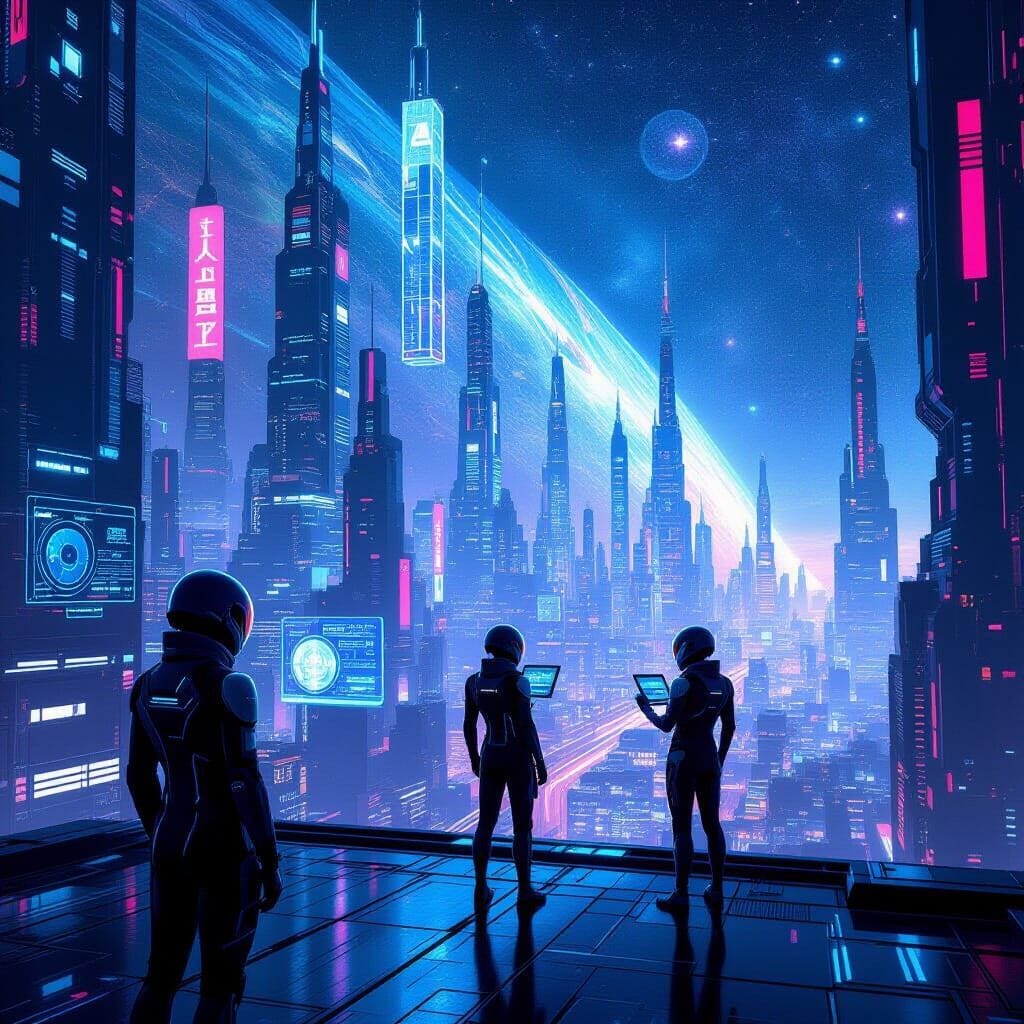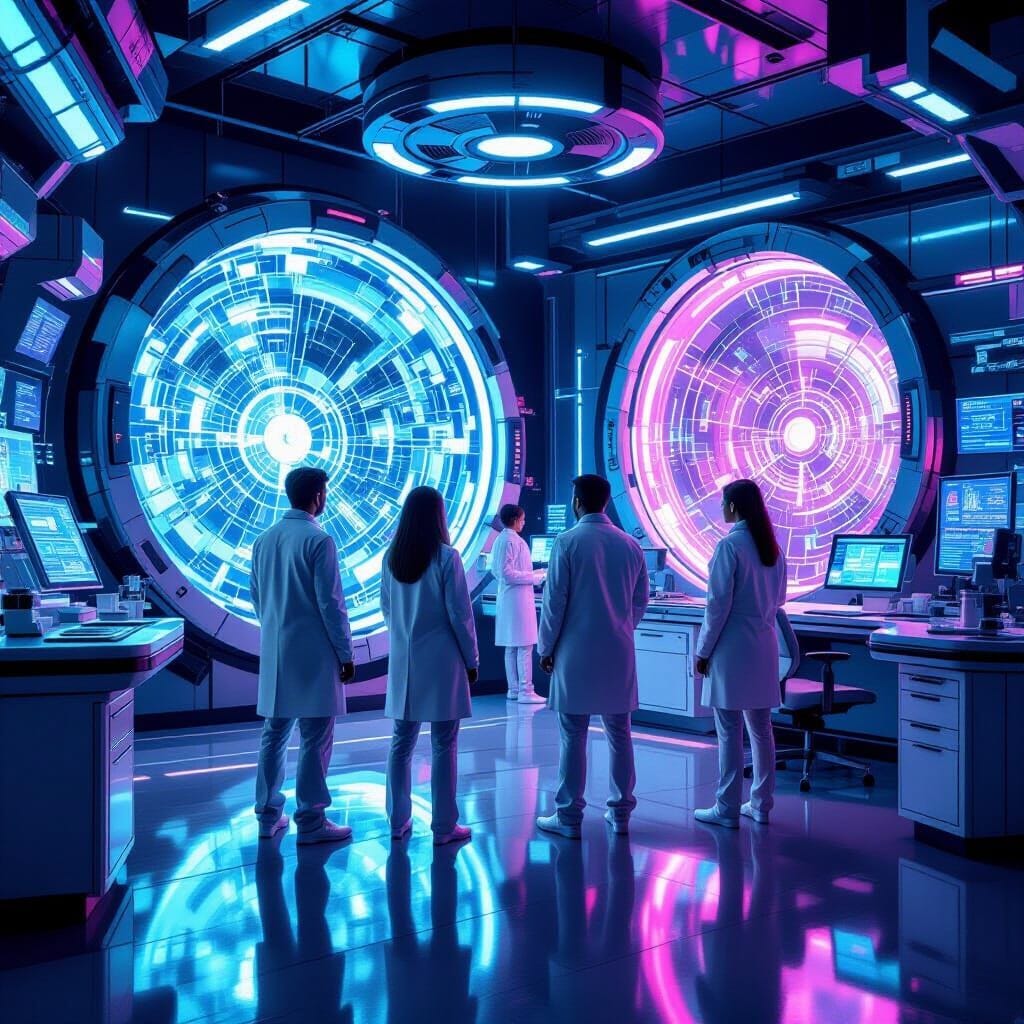The Fascinating Dawn of the Agentic Era
With Agentic AI everywhere, what is the fate of the human race?
AI Agents
The year 2025 stands as a pivotal moment in human progress.
AI Agents are not merely the chatbots and virtual assistants of a bygone era.
They are sophisticated, autonomous entities capable of complex reasoning, planning, and execution.
This article will explore the multifaceted future of humanity today, a world reshaped by the rise of AI agents.
We will delve into the technological underpinnings of this revolution.
We explore the fundamental types of agents and their operational principles.
We also investigate sophisticated multi-agent systems that are beginning to tackle some of our most pressing challenges.
The narrative of today is not one of human replacement, but of human augmentation.
2030 - well - that’s an open question.
1. The Proliferation of AI Agents in Everyday Life
By next year, AI agents will have moved beyond the realm of specialized applications to become commonplace in our homes, workplaces, and digital interactions.
This proliferation will be driven by more accessible development tools and a greater understanding of their potential.
Personalized Digital Assistants:
These agents will manage complex schedules, anticipate needs, and even offer proactive suggestions for optimizing daily routines and personal well-being.
Hyper-Personalized Consumer Experiences:
Expert personal shoppers, understanding individual preferences and needs to a granular degree, curating product selections, and even negotiating prices on behalf of the consumer.
Transforming Education:
Personalized learning paths for students, adapting to their pace and style of learning, and freeing up human teachers to focus on mentorship and higher-level instruction.
Enhanced Healthcare Management:
Managing chronic diseases, reminding patients to take medication, monitoring vital signs through connected devices, and providing a direct line of communication to healthcare providers.
Smarter Homes and Cities:
Manage energy consumption in homes, optimize traffic flow in cities through interconnected vehicle systems, and enhance public safety by analyzing real-time data to predict and prevent incidents.[
2. The Evolution of the Workforce: A New Human-AI Symbiosis
The integration of AI agents into the workforce will cause a fundamental shift in the nature of work itself, fostering a symbiotic relationship between humans and AI.
Augmentation Over Replacement:
AI agents will primarily take over repetitive, data-intensive tasks.
This frees human workers to focus on creativity, critical thinking, strategic planning, and interpersonal skills.
This shift will lead to the evolution of existing job roles, requiring a workforce that is adept at collaborating with intelligent systems.
The Rise of the "No-Code" Developer:
The development of AI agents will become increasingly democratized, with intuitive, drag-and-drop interfaces.
This will allow employees without a background in programming to create their agents to automate specific workflows and improve their productivity.
New Job Categories:
The agentic revolution will create entirely new job categories, such as AI agent trainers, ethicists, and workflow orchestrators.
They will be responsible for designing, managing, and ensuring the responsible deployment of these systems.
A Focus on Human-Centric Skills:
As AI handles more of the technical and analytical work, skills like emotional intelligence, communication, and complex problem-solving will become even more valuable in the workplace.
Challenges of Transition:
The transition will not be without its challenges, necessitating significant investment in reskilling and upskilling programs to prepare the workforce for this new reality.
Mass Unemployment:
In fact, unless training is provided to everyone in the workforce, people will be laid off and replaced with AI. En masse.
3. The Spectrum of Basic AI Agents
We need to understand the different types of basic AI agents.
Simple Reflex Agents:
These are the most fundamental type of agent, operating on a simple "condition-action" rule.
They perceive their current environment and act based on a set of predefined rules.
This makes them fast and efficient for simple tasks in predictable environments.
# Simple Reflex Agent in Python for a vacuum cleaner environment
def simple_reflex_agent(perception):
"""A simple reflex agent that reacts to the current perception."""
location = perception['location']
status = perception['status']
if status == 'dirty':
return 'suck'
elif location == 'A':
return 'right'
elif location == 'B':
return 'left'
return 'do_nothing'
# Example usage:
current_perception = {'location': 'A', 'status': 'dirty'}
action = simple_reflex_agent(current_perception)
print(f"Current Perception: {current_perception}, Action: {action}")
current_perception = {'location': 'B', 'status': 'clean'}
action = simple_reflex_agent(current_perception)
print(f"Current Perception: {current_perception}, Action: {action}")Model-Based Reflex Agents:
These agents maintain an internal "model" of the world.
This model allows them to keep track of the current state of the environment by considering the history of their perceptions and actions.
This internal state enables more informed decision-making in partially observable environments.
# Model-Based Reflex Agent in Python
class ModelBasedReflexAgent:
def __init__(self):
# The model represents the agent's belief about the state of the world
self.model = {'A': 'unknown', 'B': 'unknown'}
def update_model(self, perception):
self.model[perception['location']] = perception['status']
def decide_action(self, perception):
"""Decides an action based on the internal model and current perception."""
self.update_model(perception)
if self.model[perception['location']] == 'dirty':
return 'suck'
elif perception['location'] == 'A':
return 'right'
else:
return 'left'
# Example usage:
agent = ModelBasedReflexAgent()
perception = {'location': 'A', 'status': 'dirty'}
action = agent.decide_action(perception)
print(f"Perception: {perception}, Action: {action}, Internal Model: {agent.model}")
perception = {'location': 'B', 'status': 'clean'}
action = agent.decide_action(perception)
print(f"Perception: {perception}, Action: {action}, Internal Model: {agent.model}")Goal-Based Agents:
These agents go a step further by having explicit goals they are trying to achieve.
Their decision-making is based on choosing actions that will lead them closer to their goals, which often involves searching or planning to consider future actions.
# Goal-Based Agent in Python
class GoalBasedAgent:
def __init__(self, goal):
self.goal = goal # e.g., {'A': 'clean', 'B': 'clean'}
self.plan = []
def formulate_plan(self, current_state, environment):
"""A simple planner to achieve the goal."""
plan = []
temp_state = dict(current_state)
if temp_state != self.goal:
for room, status in self.goal.items():
if temp_state[room] != status and temp_state[room] == 'dirty':
if environment['agent_location'] != room:
plan.append('move_to_' + room)
plan.append('suck')
self.plan = plan
def get_action(self, current_state, environment):
if not self.plan:
self.formulate_plan(current_state, environment)
return self.plan.pop(0) if self.plan else 'do_nothing'
# Example usage:
agent = GoalBasedAgent(goal={'A': 'clean', 'B': 'clean'})
current_world_state = {'A': 'dirty', 'B': 'dirty'}
environment_details = {'agent_location': 'A'}
action = agent.get_action(current_world_state, environment_details)
print(f"Current State: {current_world_state}, Goal: {agent.goal}, Action: {action}")Utility-Based Agents:
Utility-based agents have a utility function that quantifies the desirability of different states.
This allows them to make more nuanced decisions by choosing the action that leads to the state with the highest expected utility.
# Utility-Based Agent in Python
def utility_based_agent(state_options):
"""Chooses the action that leads to the state with the highest utility."""
best_action = None
max_utility = -float('inf')
for action, outcome in state_options.items():
# Utility could be a function of multiple factors, e.g., speed, cost, safety
utility = calculate_utility(outcome)
if utility > max_utility:
max_utility = utility
best_action = action
return best_action
def calculate_utility(state):
# A simple utility function: prefers faster and cheaper routes
return state['speed'] - state['cost']
# Example usage:
# The agent has to choose between two routes
possible_actions = {
'take_route_1': {'speed': 60, 'cost': 10},
'take_route_2': {'speed': 80, 'cost': 30}
}
action = utility_based_agent(possible_actions)
print(f"Possible Actions: {possible_actions}, Chosen Action: {action}")Learning Agents:
These agents can improve their performance over time through experience.
They have a "learning element" that enables them to adapt to new environments and improve their task performance.
A common approach is Reinforcement Learning.
The agent learns a policy that maximizes its cumulative reward through trial and error.
It often uses a Q-table to store the value of actions in different states.
The algorithm used is called Q-Learning.
# Learning Agent (Q-Learning) in Python
import numpy as np
class QLearningAgent:
def __init__(self, num_states, num_actions, learning_rate=0.1, discount_factor=0.9, exploration_rate=0.1):
self.q_table = np.zeros((num_states, num_actions))
self.lr = learning_rate
self.gamma = discount_factor
self.epsilon = exploration_rate
def choose_action(self, state):
if np.random.uniform(0, 1) < self.epsilon:
return np.random.choice(len(self.q_table[state])) # Explore
else:
return np.argmax(self.q_table[state]) # Exploit
def learn(self, state, action, reward, next_state):
old_value = self.q_table[state, action]
next_max = np.max(self.q_table[next_state])
new_value = (1 - self.lr) * old_value + self.lr * (reward + self.gamma * next_max)
self.q_table[state, action] = new_value
# Example usage (conceptual)
# Assume a simple environment with 2 states and 2 actions
agent = QLearningAgent(num_states=2, num_actions=2)
# Simulate a learning step
state = 0
action = agent.choose_action(state)
# Assume the action resulted in moving to state 1 and receiving a reward of 1
next_state = 1
reward = 1
agent.learn(state, action, reward, next_state)
print("Q-table after one learning step:")
print(agent.q_table)4. The Power of Collaboration: Multi-Agent Systems
The true potential of AI Agents in the upcoming decade will be unlocked by their ability to collaborate in multi-agent systems.
These systems consist of multiple autonomous agents that can interact with each other to solve complex problems that are impossible for a single agent.
Distributed Problem Solving:
Multi-agent systems can break down a large, complex problem into smaller, more manageable sub-tasks, with each agent specializing in a particular area.
Enhanced Robustness and Scalability:
By distributing tasks and control, multi-agent systems can be more robust to failures of individual agents and can be more easily scaled by adding new agents to the system.
Emergent Behavior (a big one):
The interactions between agents in a multi-agent system can lead to the emergence of complex and intelligent collective behavior.
The emergence is remarkable because this behavior was not explicitly programmed into the individual agents.
Real-World Applications:
Multi-agent systems will be deployed in a variety of domains, including supply chain management, disaster response, and smart grid optimization.
Frameworks for Development:
The development of these systems is being accelerated by frameworks like Microsoft's AutoGen and CrewAI, which provide tools for creating and managing communicating agents.
5. The Technical Toolkit: Python and Essential Libraries
Python has firmly established itself as the lingua franca of AI development, and this will continue to be the case for building AI agents.
A rich ecosystem of libraries provides the building blocks for creating sophisticated agents.
Core AI and Machine Learning Libraries:
TensorFlow and PyTorch:
These are the foundational libraries for deep learning, providing the tools to build and train the neural networks that often power the decision-making capabilities of AI agents.
Scikit-learn:
A crucial library for a wide range of machine learning tasks, including classification, regression, and clustering, which can be used to build the learning components of agents.
Libraries for Building AI Agents:
LangChain:
A popular open-source framework designed to simplify the creation of applications powered by large language models (LLMs).
It provides modules for managing prompts, memory, and connecting to various data sources and tools, which are essential for agent development.[
OpenAI Agents SDK:
A lightweight framework from OpenAI for building multi-agent workflows, emphasizing ease of use and reliability.
# A simplified conceptual example using a LangChain-like structure
from langchain.agents import AgentType, initialize_agent, Tool
from langchain_community.llms import OpenAI
# Define the tools the agent can use
# In a real scenario, these would be functions that perform actual tasks
def search_web(query: str) -> str:
"""Searches the web for the given query."""
# This is a placeholder for actual web search logic
return f"Search results for: {query}"
def get_current_weather(location: str) -> str:
"""Gets the current weather for a specified location."""
# Placeholder for a weather API call
return f"The weather in {location} is sunny."
tools = [
Tool(
name="Web Search",
func=search_web,
description="Useful for when you need to answer questions about current events.",
),
Tool(
name="Weather Check",
func=get_current_weather,
description="Useful for finding out the weather in a specific location.",
),
]
# Initialize the LLM and the agent
llm = OpenAI(temperature=0)
agent = initialize_agent(
tools, llm, agent=AgentType.ZERO_SHOT_REACT_DESCRIPTION, verbose=True
)
# Run the agent with a prompt
agent.run("What is the weather like in London and what are the latest news headlines?")6. The Critical Problem of Hallucinations
A significant challenge in the deployment of AI agents, particularly those based on large language models, is the phenomenon of "hallucination."
AI generates false or misleading information with a high degree of confidence , sometimes 25% of the time.
Robust strategies to mitigate this issue will be a critical component of responsible AI development.
This is a problem that persists.
Hallucinations are a major problem in Generative AI and AI Agents today.
Some fundamental mitigation issues:
Retrieval-Augmented Generation (RAG):
RAG allows an AI agent to retrieve relevant information from a trusted external knowledge base before generating a response.
Chain-of-Thought (CoT) Prompting:
This technique encourages the LLM to break down its reasoning process into a series of intermediate steps.
By forcing the model to "show its work," it can lead to more accurate and reliable outputs, especially for complex reasoning tasks.
Fact-Checking Mechanisms:
Integrating real-time fact-checking mechanisms that can verify the information generated by an agent against trusted sources will be a standard practice for critical applications.
Specifying Data Search in Queries:
A simple yet effective technique is to explicitly instruct the model to search its training data and only provide an answer if it finds the information.
For instance, a prompt could be prefaced with: "Search this in your data, and if you find it, then reply; otherwise, don't."
7. The Rise of Multi-Agent Frameworks
To facilitate the development of sophisticated collaborative AI, several powerful multi-agent frameworks have emerged and will be central to innovation.
Microsoft AutoGen:
This open-source framework is designed for building multi-agent AI systems where agents can communicate and collaborate to solve tasks.
It's particularly well-suited for complex, asynchronous conversations between agents.
CrewAI:
A framework that focuses on orchestrating autonomous AI agents.
It enables the creation of "crews" of agents with specific roles and goals that can work together on complex tasks.
LangGraph:
An extension of the LangChain library, LangGraph allows developers to build agent runtimes as graphs.
This provides more control over the flow of execution in multi-agent systems, enabling cycles and more complex interactions.
OpenAI Agents SDK:
As mentioned earlier, this framework from OpenAI provides a streamlined way to build multi-agent workflows.
It also includes features for managing the transfer of control between agents.
Google's Agent Development Kit (ADK):
An open-source framework from Google designed to simplify the end-to-end development of agents and multi-agent systems, offering flexibility and precise control.
LangChain:
A popular open-source framework for building applications powered by large language models.
It provides modular components that can be chained together to create AI applications, including simple AI agents.
Langflow:
An open-source, low-code framework that simplifies the development of AI agents and workflows, especially those involving RAG (Retrieval-Augmented Generation) and multi-agent systems.
Its main strength is its user-friendly visual interface.
Semantic Kernel:
Developed by Microsoft, this open-source framework is designed for embedding AI into applications using "skills" and "planners."
It's production-focused and is used in products like Microsoft 365 Copilot.
These frameworks abstract away much of the complexity of building multi-agent systems, allowing developers to focus on the high-level logic of agent interaction and collaboration.
8. Resources for the Aspiring Agent Developer
The demand for individuals skilled in developing and managing AI agents will be higher than ever before.
Fortunately, a wealth of resources is becoming available for those looking to enter this exciting field.
Online Courses and Specializations:
Coursera and DeepLearning.AI:
Platforms like Coursera offer a range of courses and specializations on AI, machine learning, and now, specifically on building AI agents.
Look for offerings like "AI Agent Developer" specializations.
Vanderbilt University's Generative AI Assistants Specialization:
This series of courses focuses on creating tailored GPT-based AI for various fields.
Framework-Specific Tutorials and Documentation:
The official documentation for frameworks like:
LangChain
AutoGen
CrewAI
OpenAI Agents SDK
Semantic Kernel
LangGraph
They are invaluable resources, often including tutorials and examples.
Community and Open-Source Projects:
GitHub:
A vast number of open-source AI agent projects and repositories can be found on GitHub.
They provide practical examples and code to learn from.
Hugging Face:
A hub for the AI community, offering models, datasets, and libraries, including resources for agent development.
Developer Communities and Blogs:
Platforms like:
Medium
Substack
Hashnode
LinkedIn
HackerNoon
These all host a plethora of articles and tutorials from developers working on the cutting edge of AI agent technology.
With these, aspiring developers can gain the knowledge and practical skills necessary to contribute to the agentic age.
9. The Broader Societal and Ethical Implications
The widespread adoption of AI agents will undoubtedly bring about profound societal and ethical questions.
Economic Inequality:
While AI agents can boost productivity and economic growth, there is a huge risk that these benefits will not be evenly distributed.
This will potentially exacerbate existing inequalities if not managed through intelligent policies.
Bias and Fairness:
AI agents, particularly those trained on large datasets, can inherit and amplify existing societal biases.
Ensuring fairness and mitigating bias in their decision-making processes will be a paramount concern.
Privacy in an Agentic World:
The proliferation of personalized AI agents that collect and process vast amounts of personal data will raise significant privacy concerns.
Strong governance and security measures will be essential to protect individuals' data.
Accountability and Decision-Making:
As AI agents become more autonomous, questions of accountability will become more complex.
Who is responsible when an autonomous agent makes a mistake or causes harm?
Establishing clear frameworks for accountability will be crucial.
Human Agency and Over-Reliance:
There is a risk that an over-reliance on AI agents could lead to a decline in human skills and agency.
Fostering a relationship of collaboration rather than dependency will be key to a positive outcome.
Conclusion
This next year will be the dawn of a new era of human-AI collaboration.
The rise of AI agents presents both unprecedented opportunities and significant challenges.
From transforming our daily routines and revolutionizing industries to forcing us to confront profound ethical questions, the impact of this technology will be far-reaching.
By embracing a future where AI agents act as our partners in progress, we can unlock a new wave of creativity, productivity, and human potential.
The future of humanity is not predetermined; it is a future we will build together, one intelligent agent at a time.
References
CrewAI - Official Documentation
OpenAI Agents SDK - Official Documentation
AI Agents: Shaping the Future of Workforce Strategy | KPMG https://kpmg.com/us/en/articles/2025/ai-agents-shaping-talent-strategy.html
Sam Altman Says AI Agents Will Transform the Workforce in 2025 https://www.inc.com/ben-sherry/sam-altman-says-ai-agents-will-transform-the-workforce-in-2025/91103146
The Fearless Future: 2025 Global AI Jobs Barometer https://www.pwc.com/gx/en/issues/artificial-intelligence/ai-jobs-barometer.html
The Rise of Agentic AI: From Conversation to Action | Goodwin Law https://www.goodwinlaw.com/en/insights/publications/2025/05/insights-technology-aiml-the-rise-of-agentic-ai-from-conversation
AI ethics and governance in 2025: A Q&A with Phaedra Boinidiris | IBM https://www.ibm.com/think/insights/ai-ethics-and-governance-in-2025
The growing data privacy concerns with AI: What you need to know https://www.dataguard.com/blog/growing-data-privacy-concerns-ai/
AI and Privacy: Shifting from 2024 to 2025 | CSA https://cloudsecurityalliance.org/blog/2025/04/22/ai-and-privacy-2024-to-2025-embracing-the-future-of-global-legal-developments
All Images are AI-generated for free by the author using NightCafe Studio.
Google AI Studio was used in this article for outlining, research, and refining.









